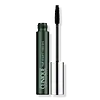What's inside
What's inside
 Key Ingredients
Key Ingredients

 Benefits
Benefits

 Concerns
Concerns

 Ingredients Side-by-side
Ingredients Side-by-side

Isopropyl Palmitate
EmollientCetearyl Ethylhexanoate
EmollientParaffin
PerfumingTalc
AbrasivePolyethylene
AbrasiveCaprylic/Capric Triglyceride
MaskingMicrocrystalline Wax
Emulsion StabilisingPolyisobutene
Mica
Cosmetic ColorantSilica
AbrasiveVp/Eicosene Copolymer
Zea Mays Starch
AbsorbentLecithin
EmollientSorbitan Sesquioleate
EmulsifyingPhenoxyethanol
PreservativeMethylparaben
PreservativeTocopheryl Acetate
AntioxidantPropylparaben
PreservativeSynthetic Wax
AbrasiveEthylparaben
PreservativeCI 77891
Cosmetic ColorantIron Oxides
CI 77120
Cosmetic ColorantIsopropyl Palmitate, Cetearyl Ethylhexanoate, Paraffin, Talc, Polyethylene, Caprylic/Capric Triglyceride, Microcrystalline Wax, Polyisobutene, Mica, Silica, Vp/Eicosene Copolymer, Zea Mays Starch, Lecithin, Sorbitan Sesquioleate, Phenoxyethanol, Methylparaben, Tocopheryl Acetate, Propylparaben, Synthetic Wax, Ethylparaben, CI 77891, Iron Oxides, CI 77120
Water
Skin ConditioningCopernicia Cerifera Wax
Stearic Acid
CleansingGlyceryl Stearate
EmollientPolyisobutene
Silica
AbrasiveAcrylates Copolymer
Aminomethyl Propanediol
BufferingVp/Eicosene Copolymer
Sodium Hyaluronate
HumectantLauroyl Lysine
Skin ConditioningPantethine
EmollientMelanin
Skin ProtectingPanthenol
Skin ConditioningEthylhexylglycerin
Skin ConditioningHydroxyethylcellulose
Emulsion StabilisingCalcium Aluminum Borosilicate
Pvp
Emulsion StabilisingAcacia Senegal Gum
MaskingIsostearic Acid
CleansingSimethicone
EmollientDimethicone PEG-8 Polyacrylate
Urea
BufferingGlycerin
HumectantPentaerythrityl Tetra-Di-T-Butyl Hydroxyhydrocinnamate
AntioxidantSodium Lauryl Sulfate
CleansingPEG-8 Dimethicone
EmulsifyingDisodium EDTA
Sorbic Acid
PreservativeChlorphenesin
AntimicrobialSodium Dehydroacetate
PreservativePhenoxyethanol
PreservativeMica
Cosmetic ColorantCI 77491
Cosmetic ColorantCI 77492
Cosmetic ColorantCI 77499
Cosmetic ColorantCI 77400
Cosmetic ColorantCI 42090
Cosmetic ColorantCI 77891
Cosmetic ColorantCI 19140
Cosmetic ColorantCI 77288
Cosmetic ColorantCI 77289
Cosmetic ColorantCI 75470
Cosmetic ColorantCI 77163
Cosmetic ColorantCI 77007
Cosmetic ColorantCI 77000
Cosmetic ColorantWater, Copernicia Cerifera Wax, Stearic Acid, Glyceryl Stearate, Polyisobutene, Silica, Acrylates Copolymer, Aminomethyl Propanediol, Vp/Eicosene Copolymer, Sodium Hyaluronate, Lauroyl Lysine, Pantethine, Melanin, Panthenol, Ethylhexylglycerin, Hydroxyethylcellulose, Calcium Aluminum Borosilicate, Pvp, Acacia Senegal Gum, Isostearic Acid, Simethicone, Dimethicone PEG-8 Polyacrylate, Urea, Glycerin, Pentaerythrityl Tetra-Di-T-Butyl Hydroxyhydrocinnamate, Sodium Lauryl Sulfate, PEG-8 Dimethicone, Disodium EDTA, Sorbic Acid, Chlorphenesin, Sodium Dehydroacetate, Phenoxyethanol, Mica, CI 77491, CI 77492, CI 77499, CI 77400, CI 42090, CI 77891, CI 19140, CI 77288, CI 77289, CI 75470, CI 77163, CI 77007, CI 77000
 Reviews
Reviews

Ingredients Explained
These ingredients are found in both products.
Ingredients higher up in an ingredient list are typically present in a larger amount.
Ci 77891 is a white pigment from Titanium dioxide. It is naturally found in minerals such as rutile and ilmenite.
It's main function is to add a white color to cosmetics. It can also be mixed with other colors to create different shades.
Ci 77891 is commonly found in sunscreens due to its ability to block UV rays.
Learn more about CI 77891Mica is a naturally occurring mineral used to add shimmer and color in cosmetics. It can also help improve the texture of a product or give it an opaque, white/silver color.
Serecite is the name for very fine but ragged grains of mica.
This ingredient is often coated with metal oxides like titanium dioxide. Trace amounts of heavy metals may be found in mica, but these metals are not harmful in our personal products.
Mica has been used since prehistoric times throughout the world. Ancient Egyptian, Indian, Greek, Roman, Aztec, and Chinese civilizations have used mica.
Learn more about MicaPhenoxyethanol is a preservative that has germicide, antimicrobial, and aromatic properties. Studies show that phenoxyethanol can prevent microbial growth. By itself, it has a scent that is similar to that of a rose.
It's often used in formulations along with Caprylyl Glycol to preserve the shelf life of products.
Polyisobutene is a synthetic polymer made from isobutene.
It is a film-forming agent and helps bind ingredients together.
Polyisobutene is not absorbed by the skin.
Learn more about PolyisobuteneSilica, also known as silicon dioxide, is a naturally occurring mineral. It is used as a fine, spherical, and porous powder in cosmetics.
Though it has exfoliant properties, the function of silica varies depending on the product.
The unique structure of silica enhances the spreadability and adds smoothness, making it a great texture enhancer.
It is also used as an active carrier, emulsifier, and mattifier due to its ability to absorb excess oil.
In some products, tiny microneedles called spicules are made from silica or hydrolyzed sponge. When you rub them in, they lightly polish away dead skin layers and enhance the penetration of active ingredients.
Learn more about SilicaWe don't have a description for Vp/Eicosene Copolymer yet.